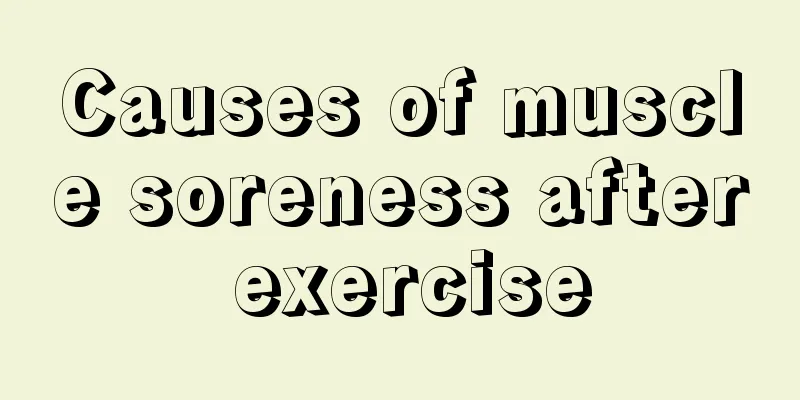Causes of muscle soreness after exercise

|
Some people will experience muscle soreness after exercise. This is a common injury for people who like sports. If muscle soreness occurs, they can no longer exercise. This is because this phenomenon occurs when your muscles are undergoing strenuous exercise. So what exactly causes muscle soreness during exercise? Tissue traction theory: caused by muscle damage. *Muscle spasm theory: caused by repeated muscle cramps. *Connective tissue theory: It is caused by injury to the muscle's connective tissue (such as tendons). In fact, chronic muscle soreness is caused by muscle damage and division. Ways to avoid muscle soreness: *Muscle stretching exercises (performed in a static manner). *Gradual load principle: The overload principle of muscle training makes muscles prone to injury. Only by combining the gradual load principle and slowly improving the quality and quantity of muscle training can injuries be effectively avoided. * Appropriate supplementation of vitamin C is recommended, but further analysis and confirmation is needed. Delayed onset muscle soreness refers to muscle soreness that occurs several hours to 24 hours after exercise. The muscle soreness usually lasts for one to three days. The causes of delayed onset muscle soreness are nothing more than muscle injury, muscle spasm or connective tissue abnormalities. However, it is generally believed that connective tissue abnormalities are the biggest cause of delayed onset muscle soreness. The general public believes that muscle soreness is caused by lactic acid accumulation, which is incorrect. Sudden, intense or overly repetitive activity of muscles that are rarely used or trained can easily cause delayed muscle soreness. The best way to prevent it is to perform muscle activity in a gradual manner so that the muscles can bear the heavy or repeated exercise that will be performed. If you already have muscle soreness, you should rest and treat it with heat therapy. Avoid excessive activity, otherwise more serious injuries may occur. It is a chronic, repeated accumulation of micro-damage. It often occurs in areas where there is excessive muscle activity or prolonged muscle tension in a static posture. It can be divided into acute and chronic types. Common areas are the muscles of the waist, neck, and legs. The above article explains to us in detail the reasons for muscle soreness after exercise. Therefore, if you encounter such a situation in your daily life, you should stop exercising immediately, sit down and rest, and slowly slow down the intensity of your exercise. |
<<: How to do belly-reducing exercises
>>: How to do squat exercise effectively
Recommend
How to do 8-style push-ups
Men all want to have sexy and strong pectoral mus...
Longitudinal stretching exercise method
I wonder if you have paid attention to stretching...
Is it useful to use a push-up stand?
Push-ups are a kind of fitness exercise that peop...
What kind of exercise is suitable after dinner?
I am a lazy person and just want to lie down afte...
It only takes 30 seconds to get the "male god"
Skinny beauty is popular in modern times. In orde...
Which ball is the fastest?
Many people are very interested in ball sports. B...
What are the benefits of hitting the sandbag every day?
Today's living environment is getting worse a...
Is it good to run on an empty stomach in the morning?
Many people are used to doing morning exercises, ...
What to eat after a workout
Fitness is a particularly important part of our l...
Is it good to run on an empty stomach in the morning?
Running is very common. You should pay attention ...
How soon after yoga can I eat?
Yoga is currently a very fashionable sport, espec...
How to practice yoga in winter
Yoga is currently a very popular sport with many ...
How to run to lose thigh fat?
Recently, many people wear very little clothes, w...
What kind of exercise in the morning can help you lose weight quickly
Nowadays, most people have to work long hours and...
Can swimming build muscle?
The benefits of exercise to the body are self-evi...









